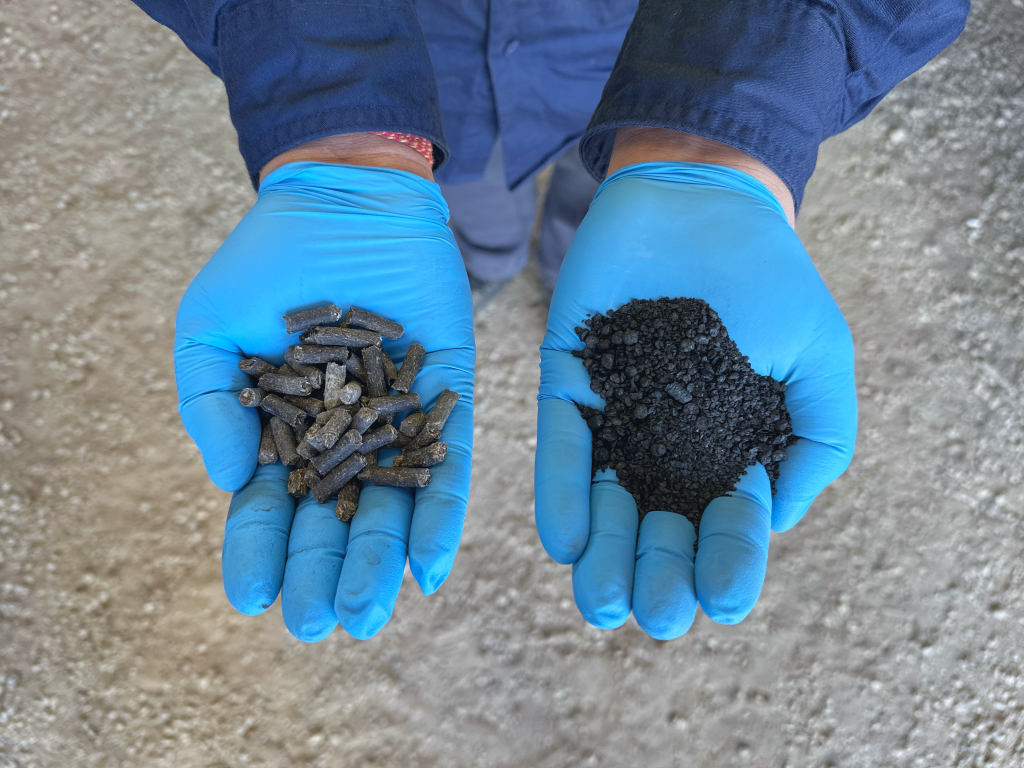Australia produces 1.5 Mt of wastewater sludge every year, enough to fill the Melbourne Cricket Ground.
Until recently, farmers have relied on this nutrient-rich substance for fertilising crops after it’s been processed into biosolids via a stabilisation process that usually occurs at the wastewater treatment plants.
But public health concerns about the presence of high levels of contaminants such as microplastics, pharmaceuticals, pathogens, and per- and ploy-fluoro alkyl substances (PFAS) in biosolids have led to tough new regulations that may severely restrict its land use.
This may also significantly impact farms planning to use biosolids to meet their nutrient and carbon demand.
The new rules also mean water authorities have suddenly faced a huge bill for pouring the sludge into landfill. Globally, nearly a third of all biosolids are disposed of in that way.
However, a landmark research project at RMIT University is pioneering a way to safely remove contaminants from sewage using a novel pyrolysis process that operates at relatively high temperatures without the use of oxygen.
Multiple applications
The resulting carbon-rich product is called biochar. It can be used not only for agriculture, but also to make carbon electrodes for batteries and other advanced energy storage devices.
Project lead Professor Kalpit Shah told create that his team at RMIT’s Department of Chemical and Environmental Engineering had conducted rigorous tests that suggest the process — the first of its kind in the world — could transform biosolids and other waste into more sustainable and commercially viable products such as biochar and bioenergy.

The groundbreaking pyrolysis technology is called PYROCO, and thermally processes materials to weed out materials harmful to humans or the environment. RMIT has already filed a patent to protect its work.
“There are only a handful of technologies for treating biosolids in the world,” Shah said. “Our invention is the first-ever commercially viable fluidised bed pyrolysis process. The key is the addition of heat exchanger tubes in the fluidised bed that helps achieve a higher surface area for heat transfer.”
Benefits of PYROCO
Shah’s design is more efficient than other techniques for making biochar and bioenergy, such as augers, fixed or moving bed processes, retort stoves and kilns. It has four main advantages over its rivals:
1) It doesn’t have moving parts so is less prone to wear and tear due to thermal expansion.
2) Its higher heat transfer coefficient means it works faster and requires a smaller surface area, reducing expenses on capital and operating.
3) As it’s made up of only tubes and pipes, it’s easy to assemble, maintain and fabricate.
4) Its innovative design allows seasonal variations in feedstock more easily, as it doesn’t need an external energy source if the quality of biosolids declines.
“I began the project when I joined RMIT in 2017,” Shah said, “and we demonstrated PYROCO Mark-1 to industry in 2021. Since then, we’ve improved the design several times to produce even more benefits.
Industry support
The RMIT researchers’ industry partners include South East Water, Intelligent Water Networks and Greater Western Water. The latest set of trials of PYROCO Mark-2 at Melton Recycled Water Plant have validated the procedure and demonstrated improvements in product quality, safety and automation.
The Victorian government has contributed $100,000 of the $1 million costs, with the remainder funded by RMIT, South East Water, Intelligent Water Networks, Greater Western Water, Barwon Water, Westernport Water and East Gippsland Water.
The PYROCO Mark-2 pilot unit was built using the funding received from Victorian Higher Education State Investment Fund (VHESIF).
“The results we’ve achieved so far are due to a lot of hard work by some very talented PhD students and researchers,” Shah said. “Our challenge now is to attract the millions of dollars in capital investment required to scale it commercially, but we’re confident that can be done. It represents a real step-change in the field.”

